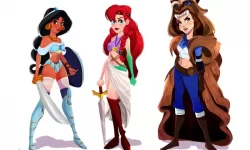History of Beauty
The concept of beauty and its standards have evolved throughout history, influenced by various cultural, social, and historical factors. Beauty ideals have changed significantly over time, reflecting the values, beliefs, and trends of each era. Here is a broad overview of the history of beauty:

Ancient Civilizations:
In ancient civilizations such as Egypt, Mesopotamia, Greece, and Rome, beauty was often associated with symmetry, proportion, and physical features that were considered harmonious. In these societies, ideals of beauty were often tied to cultural and social factors, with different standards for men and women.
Medieval and Renaissance Period:
During the medieval period, beauty was often associated with religious piety and spiritual virtues. Pale skin, plump figures, and delicate features were considered attractive for women, while men were often portrayed as strong and muscular. The Renaissance period saw a revival of interest in classical ideals of beauty, with a focus on balance, proportion, and naturalistic representations.
18th and 19th Centuries:
In the 18th century, Western beauty standards emphasized a refined and elegant appearance, with pale skin, rosy cheeks, and powdered wigs for both men and women. During the 19th century, the Victorian era, women’s beauty ideals included a small waist, hourglass figure, and a modest, demure demeanor.
20th Century:
The 20th century witnessed significant shifts in beauty ideals due to globalization, technological advancements, and changing societal norms. In the early 1900s, there was a growing emphasis on the “flapper” look, with women rejecting traditional constraints and embracing a more liberated, youthful appearance. The mid-20th century saw a return to more feminine and glamorous aesthetics, influenced by Hollywood and fashion icons.
Late 20th Century and Beyond:
The latter half of the 20th century and the 21st century have been marked by a more diverse and inclusive understanding of beauty. There has been a broader acceptance of different body types, ethnicities, and non-traditional standards of beauty. The rise of the body positivity movement and advocacy for inclusivity has challenged narrow beauty ideals and celebrated individuality.
In recent years, there has been a greater focus on embracing natural beauty, self-acceptance, and empowerment. Social media and digital platforms have also played a significant role in shaping beauty trends and creating a platform for diverse representations of beauty.
Overall, the history of beauty demonstrates how societal, cultural, and historical contexts shape perceptions of beauty. It highlights the evolving nature of beauty ideals, from traditional and narrow standards to a more inclusive and diverse understanding of what is considered beautiful.







